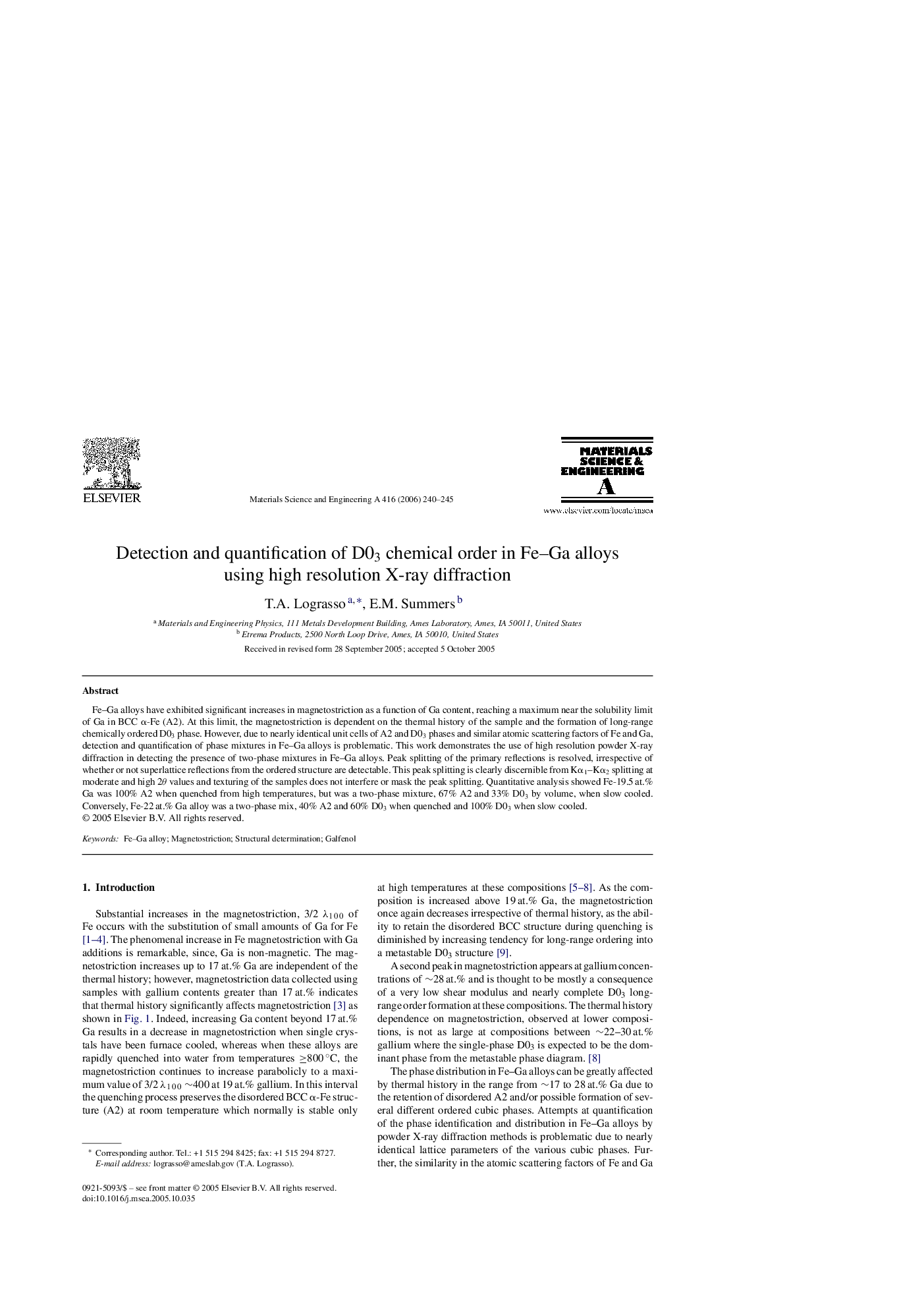| کد مقاله | کد نشریه | سال انتشار | مقاله انگلیسی | نسخه تمام متن |
|---|---|---|---|---|
| 1586090 | 1514928 | 2006 | 6 صفحه PDF | دانلود رایگان |

Fe–Ga alloys have exhibited significant increases in magnetostriction as a function of Ga content, reaching a maximum near the solubility limit of Ga in BCC α-Fe (A2). At this limit, the magnetostriction is dependent on the thermal history of the sample and the formation of long-range chemically ordered D03 phase. However, due to nearly identical unit cells of A2 and D03 phases and similar atomic scattering factors of Fe and Ga, detection and quantification of phase mixtures in Fe–Ga alloys is problematic. This work demonstrates the use of high resolution powder X-ray diffraction in detecting the presence of two-phase mixtures in Fe–Ga alloys. Peak splitting of the primary reflections is resolved, irrespective of whether or not superlattice reflections from the ordered structure are detectable. This peak splitting is clearly discernible from Kα1–Kα2 splitting at moderate and high 2θ values and texturing of the samples does not interfere or mask the peak splitting. Quantitative analysis showed Fe-19.5 at.% Ga was 100% A2 when quenched from high temperatures, but was a two-phase mixture, 67% A2 and 33% D03 by volume, when slow cooled. Conversely, Fe-22 at.% Ga alloy was a two-phase mix, 40% A2 and 60% D03 when quenched and 100% D03 when slow cooled.
Journal: Materials Science and Engineering: A - Volume 416, Issues 1–2, 25 January 2006, Pages 240–245